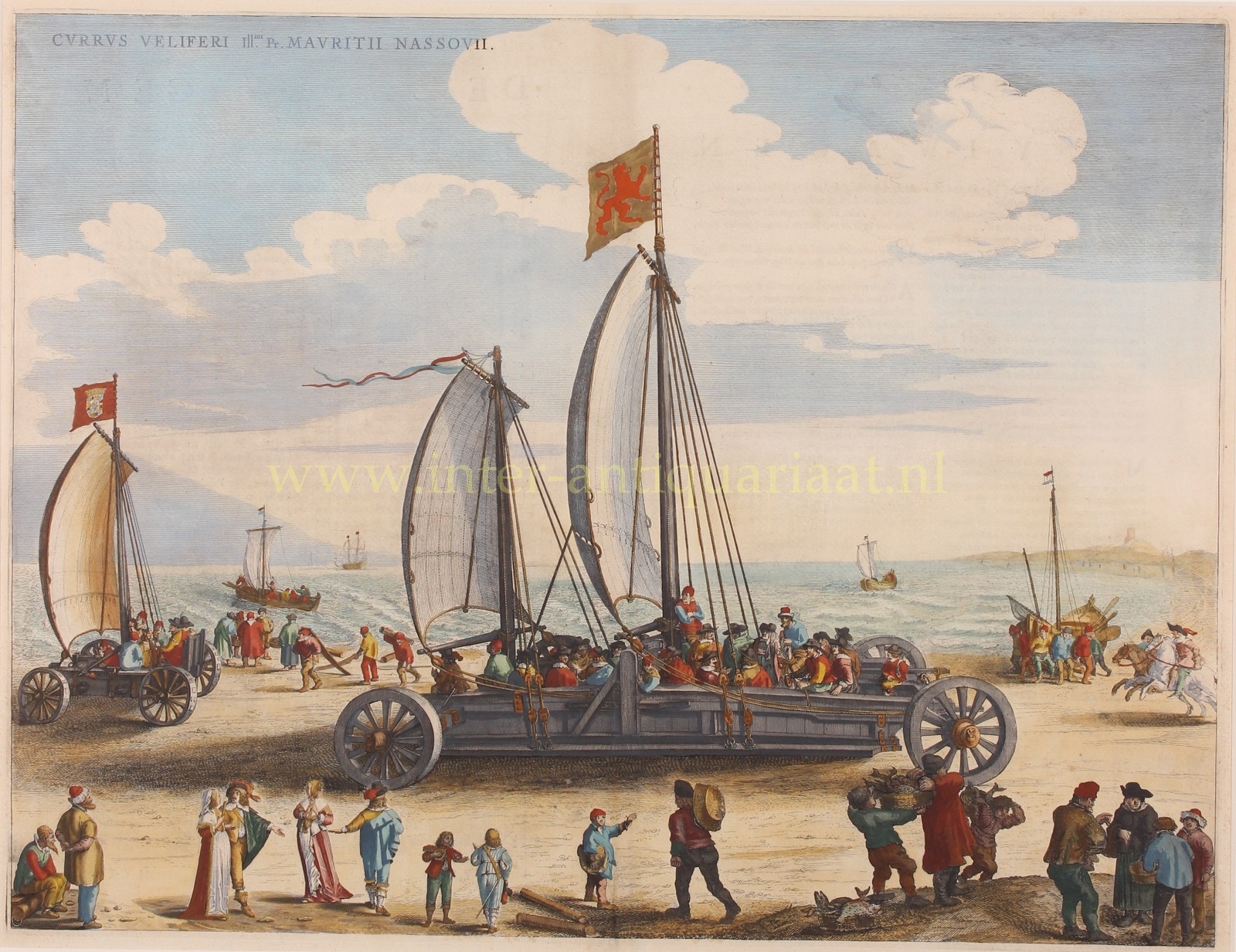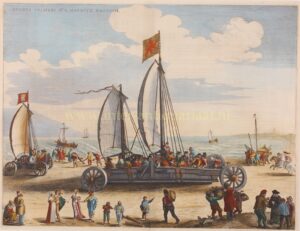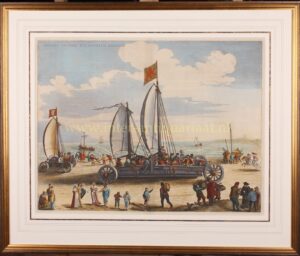“Currus veliferi Illmi. Pr. Mauritii Nassovii.” [Land yacht of the most illustrious Maurice, Prince of Orange] Copper engraving published in Amsterdam in 1649 by Joan Blaeu. Size: (platemark) approx. 45 x 57 cm.
The engraving originates from Joan Blaeu’s town book of The Netherlands published on June 5, 1648, marking the end of the Eighty Years’ War with the Peace of Westphalia. Blaeu used Jacob de Gheyn‘s large engraving of the land yacht from 1603 (traveling northward, towards the right) as a model for his own print.
On a day between April 13 and May 23, 1602, Prince Maurice, accompanied by 27 guests, embarked on a journey with his land yacht from Scheveningen to Petten, covering 14 Dutch miles, proudly flying the princely standard. Among the occupants of the vehicle, invented by Simon Stevin, were the then 19-year-old study companion of Frederick Henry, Hugo de Groot, the French ambassador in The Hague, Paul Choart de Buzanval, Francisco de Mendoza, captured near Nieuwpoort, a general in the army of Archduke Albert of Austria, Ulrik of Holstein, brother of the Danish king Christian IV, and Frederick Henry.
The land yacht could traverse the Scheveningen-Petten route solely with a strong southwest wind over the narrow, fairly smooth strip of sand between the sea and the dunes. The vehicle could reach speeds of over 50 kilometers per hour. On the right side of the scene, two horsemen gallop, presumably included to demonstrate the much faster movement of the wagon compared to a horse.
On the left, likely the prototype of the large wagon is depicted. Both wagons remained in possession of the Oranges until the end of the eighteenth century. In 1795, the small yacht was sold at a public auction.
Price: SOLD





